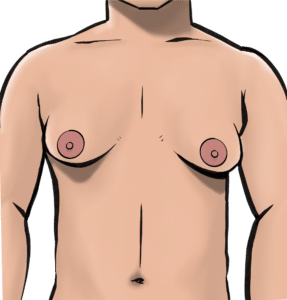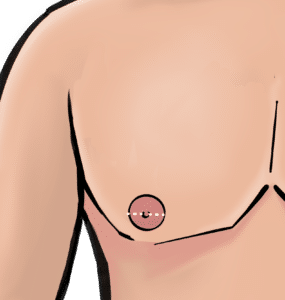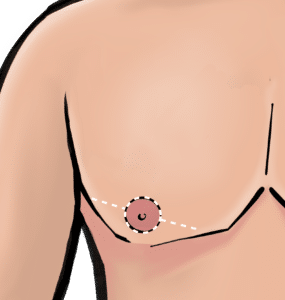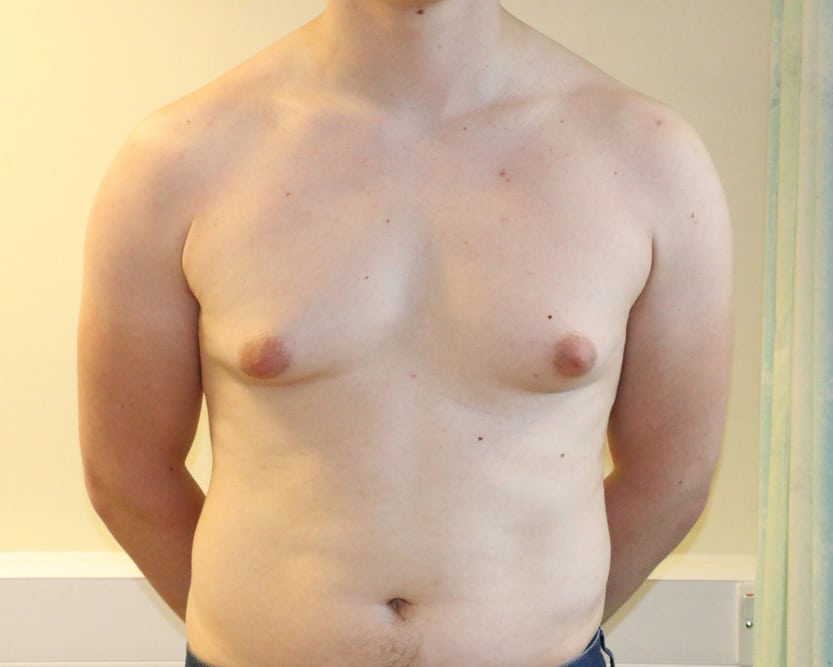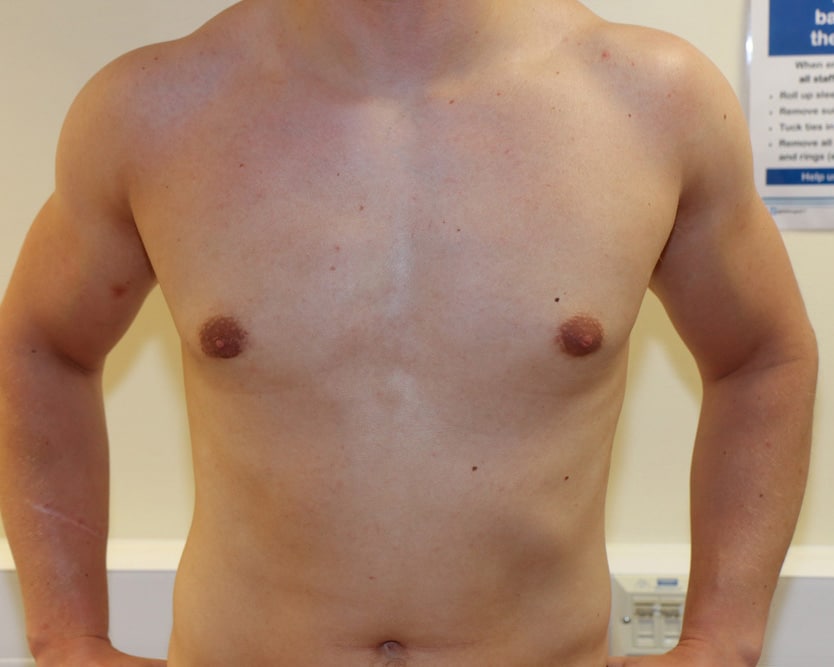|
Procedure
|
Enlarged male breasts (=gynaecomastia) can be natural (=physiological) or caused by medical issues (=pathological). Medical causes include malnutrition, endocrinological (=hormonal) problems, testicular conditions, liver or thyroid disease, cancer, certain medications for blood pressure, heart or prostate and use of anabolic steroids, alcohol and some recreational drugs such as cannabis amongst others. It is important to rule out medical causes before starting aesthetic treatment. In some cases, weight loss alone can be successful.
The surgery can address large areolae, saggy skin, excess fat and excess breast tissue. Prominent breast tissue is best excised. Liposuction reduces fat tissue. Large areolae or excess skin can be reduced by excision leaving a scar between skin and areola. For larger amounts of skin sagginess, the cuts extend sidewards of the areolae.
I do not use drains routinely. The wounds are repaired with sutures under the skin which do not require removal and dissolve within four months. A support garment following surgery is recommended.
|
|
Scars
|
Between skin and areola; sometimes extending sidewards
|
|
Operation time
|
1.5 hours
|
|
Anaesthesia
|
General or Local
|
|
Hospital Stay
|
Day Surgery
|
|
Benefits
|
Aesthetic, Psychological, Functional, Symptomatic
|
|
Risks
|
Bleeding, Infection, Scar problems (stretched, thick, abnormal pigmentation, red, retracted etc.), Skin discoloration, Wound separation, Slough, Necrosis of nipple, skin or fat, Fat cysts, Nipple retraction, Pain, Numbness, Pneumothorax, Skin penetration, Bruising, Swelling, Overcorrection, Undercorrection, Asymmetry, Droopiness, Contour irregularities, Aesthetic imperfections (higher risk after subsequent weight changes), Unfavourable nipple position or shape, Seroma, Shoulder problems, Abnormal scar pigmentation, Need for further surgery, Skin cones, Liposuction: Friction / thermal burns, Fat embolism, Allergic reaction, (General anaesthetic: Chest infection, Heart attack, Stroke, Blood clots in legs & lungs).
N.B. Most complications are unlikely. Serious risks or death are rare
|
|
Risk factors
|
Smoking / flights within 6 weeks of surgery, overweight, high blood pressure, bleeding tendency (Stop herbal products or supplements for two weeks before surgery), diabetes
|
|
Optimising factors
|
Diet rich in Vitamin C and protein, plenty of fluids, fresh air, scar massage, sun protection, support garments
|
|
Discomfort
|
1 - 2 weeks
|
|
Bruising
|
2 - 3 weeks
|
|
Recovery
|
Light activities 2 weeks, Driving 3 weeks, Physical work & sports & sex 6 weeks, Unrestricted 3 months
|
|
Acceptable appearance
|
2 - 4 weeks for most patients (This is subjective)
|
|
Final result
|
6 - 18 months
|
|
Alternatives
|
No Surgery, Garments, Weight loss, Treatment of any underlying medical conditions, Lifestyle changes (alcohol or drugs)
|

